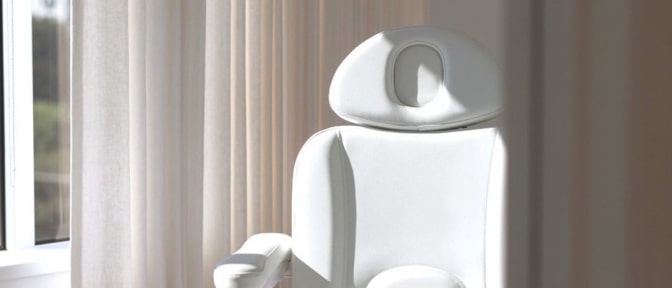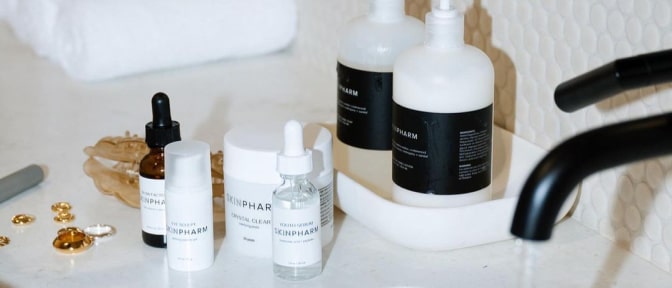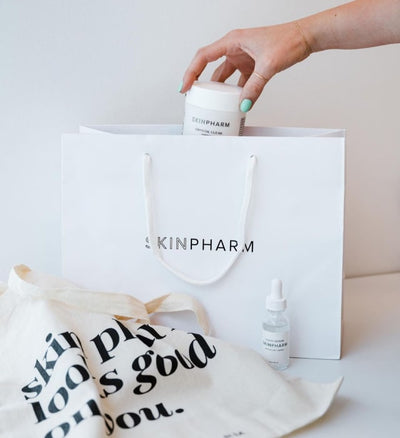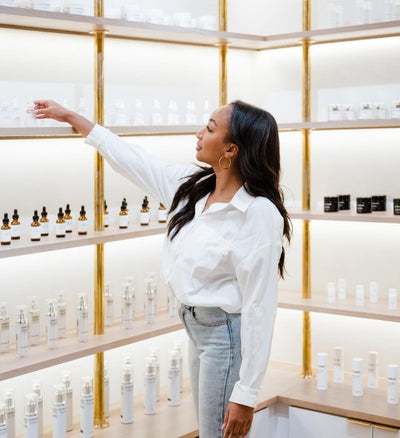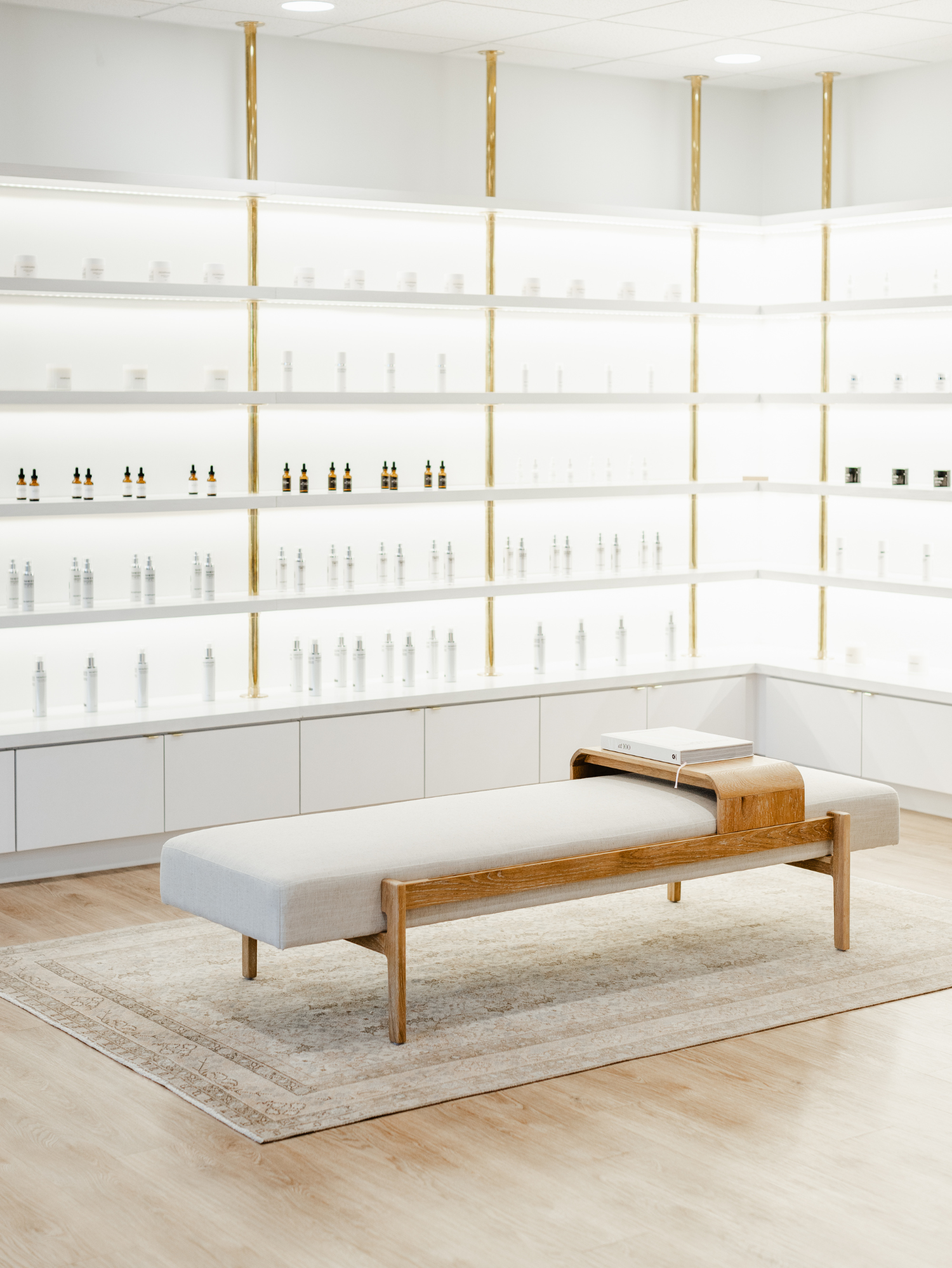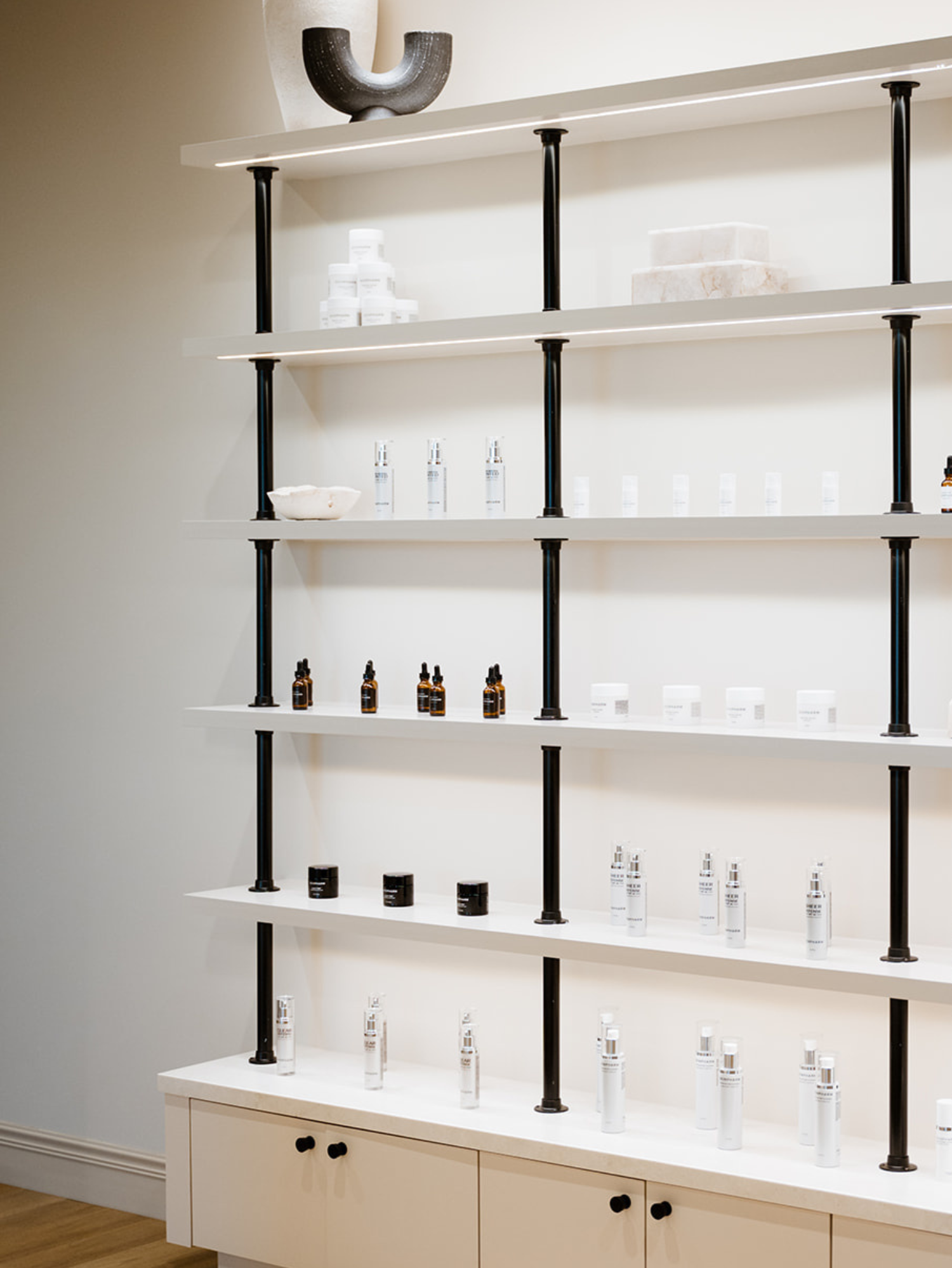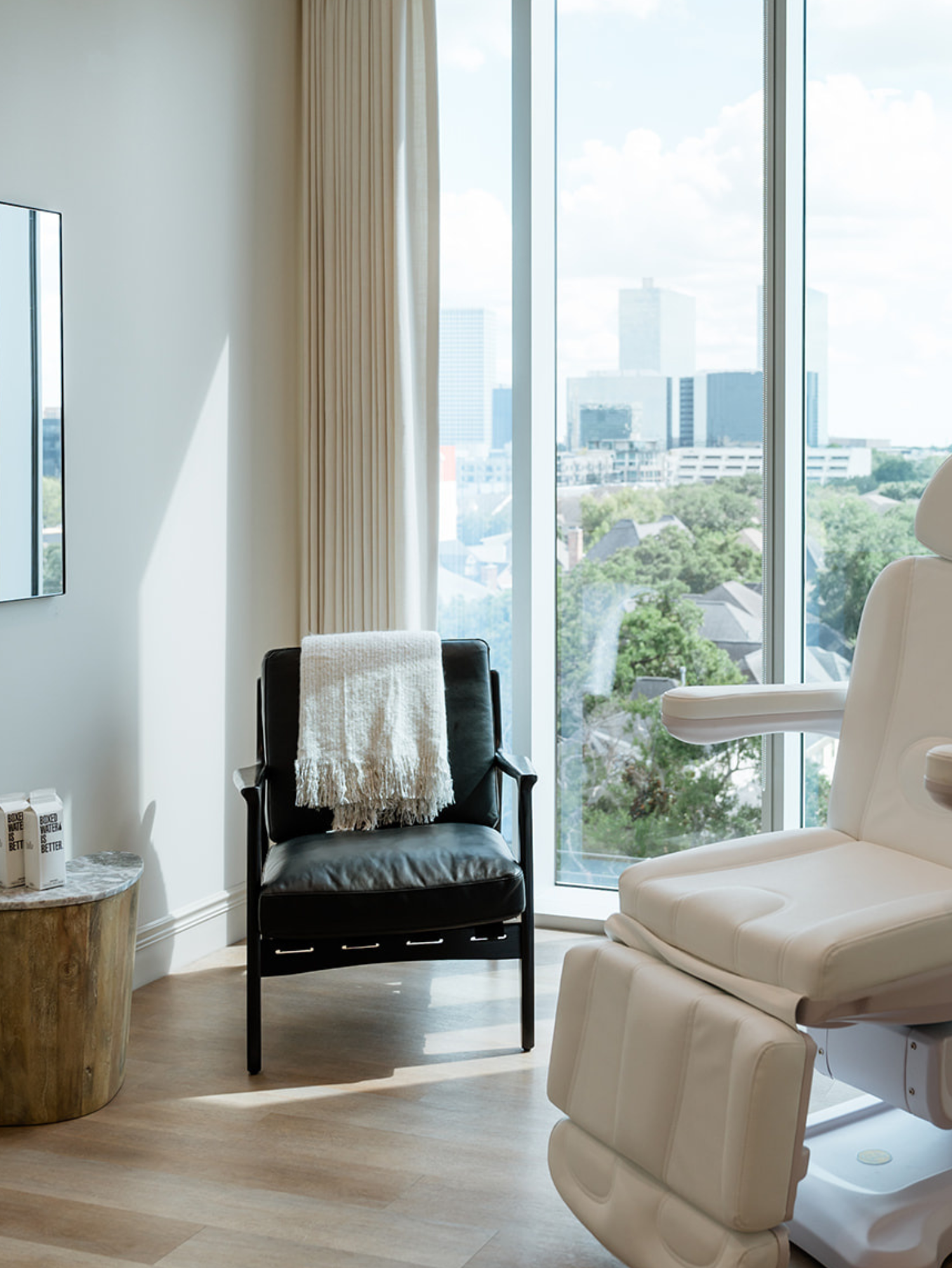Shop skin care
Clinics
VISIT OUR 9 CLINICS →
HOURS
Monday – Friday
9:30a – 5:30p
Tinted vs. Untinted Sunscreen: What’s the Difference?

Sunscreen not only protects your vulnerable skin from harmful UV rays — it also helps prevent visible signs of aging.
But with so many different types of sunscreen on the market, how can you know which is right for your unique skin? Let’s dive into tinted vs. untinted sunscreen and what to look for to ensure you pick your perfect match.
What is sunscreen?
There are three basic components of sunscreen: the sun protection factor (SPF), ultraviolet protection and how it reacts when exposed to water.
Sun protection factor (SPF)
A sunscreen’s SPF describes how much a single application can protect you from the sun’s ultraviolet (UV) radiation. SPF can range from 15 to over 50, although the level of protection only increases slightly with each level over SPF 30.
Dermatologists recommend choosing a sunscreen with at least an SPF of 30, which is estimated to protect the skin from 97 percent of ultraviolet radiation.
Ultraviolet protection
There are two different kinds of ultraviolet radiation (UV rays) that can impact our skin, even after just a few minutes outside. UVA radiation, or “aging” radiation, can trigger many signs of premature aging and even affect the retinas — so make sure to wear your sunglasses!
UVB radiation, or “burning” radiation, can penetrate the skin and cause a sunburn. UVA and UVB rays can both affect your skin and cause long-term damage, so it’s important to protect against both by choosing a sunscreen labeled “broad-spectrum.”
Water resistance
Water resistance is the final component of a quality protective sunscreen. Water resistance is how long your sunscreen remains effective in the water. Even if your sunscreen is water resistant, you should reapply it frequently if you are swimming or sweating. No sunscreen is truly “waterproof,” although many sunscreens claim to be.
ON THE BLOG: What Is SPF + Why Is It So Important? >
What are the benefits of wearing sunscreen?
We all love spending time outside, and understanding sun safety can help us minimize long-term effects of sun exposure. Beyond preventing sunburn, there are many benefits of wearing sunscreen.
Wearing sunscreen regularly can help prevent the appearance of sunspots. As the impact of UV radiation builds up in your skin over time, it can lead to areas of increased melanin (pigment). These areas of increased pigmentation are often called sunspots, age spots or dark spots.
Regular sunscreen use can also help your complexion stay youthful and radiant. UVA rays can cause your skin to age prematurely, triggering the appearance of fine lines and wrinkles much sooner than they would ordinarily appear.
While no sunscreen is 100 percent effective, wearing sunscreen can block the vast majority of these rays and keep your skin looking as youthful as possible for as long as possible.
Tinted vs. untinted sunscreen — which is better?
While there are tons of different sunscreens to choose from, you might be wondering whether to buy a tinted or untinted option. This ultimately comes down to personal preference, but let’s discuss the differences between the two.
Tinted sunscreen
Tinted sunscreens offer the same sun protection while also being slightly tinted to counteract redness and give the appearance of even skin. Options like our 100% Mineral Tinted SPF and Sheer Defense are lightweight enough to be worn under makeup, but tinted enough that you can wear it on its own and still get good coverage and protection.
Untinted sunscreen
Untinted sunscreen comes in a few different varieties, depending on what the active ingredient is. For instance, mineral sunscreens can sometimes give the skin a chalky or white appearance, no matter how much you rub them in. Luckily, chemical sunscreens like our untinted Clear Defense absorb seamlessly, protecting against visible signs of aging while still letting your natural radiance shine through.
Tips for using sunscreen
You should always apply sunscreen before you leave the house, but you need more than just a one-and-done application to be fully protected. Here are some tips to get the most protection out of your sunscreen:
- Combine sunscreen with protective clothing when possible. A wide-brimmed hat and a pair of sunglasses (with UV protection) can keep the sun out of some of your most sensitive areas while you’re outside.
- Know how much sunscreen to use. Many people use far too much sunscreen, which doesn’t technically hurt anything — but you’ll go through it a lot faster and spend more money in the long run. For most of us, it just takes a shot glass (about one ounce) of sunscreen to cover your entire body.
- Don’t forget about your lips. The delicate skin on your lips can also get sunburnt and develop skin care concerns if left unprotected. A sun-protective lip balm with an SPF of at least 30 can help protect this sensitive skin and also prevent windburn and chapping.
- Reapply frequently. The general rule of thumb is to reapply your sunscreen at least every two hours. If you are swimming or sweating, reapply even more frequently. If you’re unsure, ask your skin care provider or refer to the directions on the bottle.
- Replace your sunscreen frequently. Sunscreen generally lasts about three years, so replace it often to protect your skin. If it’s expired, sunscreen won’t work as well and may even irritate the skin.
ON THE BLOG: Here’s Why You Should Wear SPF Every Single Day! >
The bottom line…
Ultimately, your answer to the tinted vs. untinted sunscreen question depends on what you’re looking for. Tinted sunscreens can provide a little additional coverage to even out your complexion, especially if you plan to wear them on their own.
Regardless of which sunscreen you choose, wearing SPF can make a huge difference in your appearance long-term — especially when it comes to preventing visible signs of premature aging.
SOURCES:
Sun Protection Factor (SPF) | FDA
Definition of UVA radiation | NCI Dictionary of Cancer Terms
Sun Safety | Skin Cancer | CDC
